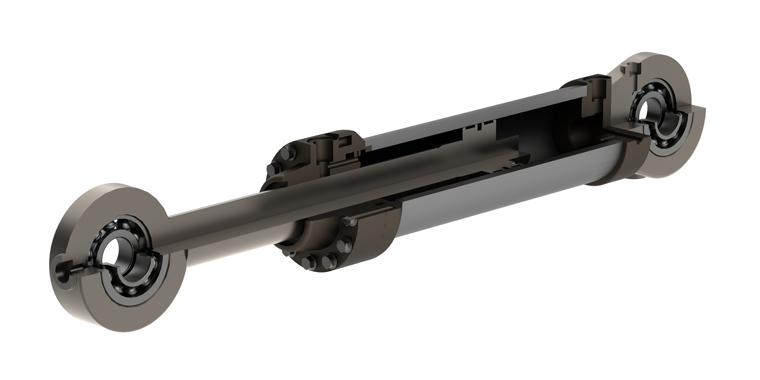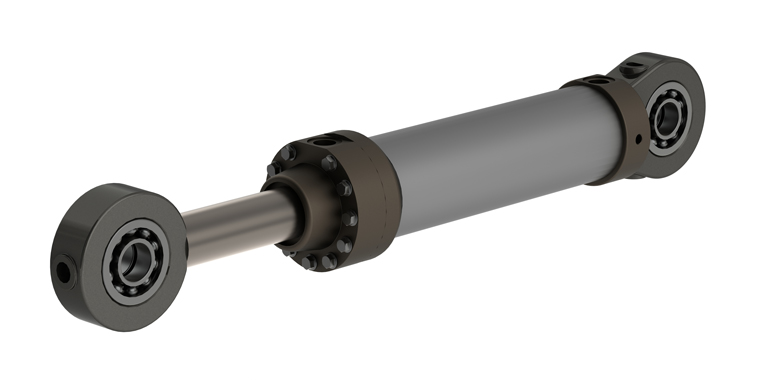

Elevate Your Operation with the Right Hydraulic Cylinder Supplier
Whether you're wondering "what is a hydraulic cylinder?" or want to learn about hydraulic cylinder parts and how they operate, or you're considering hydraulic cylinder repair or rebuilding, understanding the principles of these cylinders is vital. In this comprehensive overview of hydraulic cylinders, we answer some of the most frequently asked issues surrounding these cylinders.
Why do we need a hydraulic cylinder?
A hydraulic cylinder is a part of a machine's hydraulic system. Simply said, a hydraulic cylinder is a hydraulic actuator that converts hydraulic energy to mechanical motion to provide linear motion. A hydraulic cylinder is analogous to a muscle in that it causes movement with the machine's hydraulic system, making it similar to a muscle. According to the basic concept of hydraulics, a volume flow is formed when the power machine rotates the pump. They play a vital role in smooth and efficient operation and are used in a variety of applications ranging from construction and manufacturing to agriculture and transport.

The importance of hydraulic cylinders
The following are the significance of hydraulic cylinder:
-
Enhance productivity
The potential of hydraulics to move huge quantities of weight is well known. When liquids are compressed, they can produce a force ten times greater than the original pressure. As a result, extremely heavy weights can be moved with little effort. -
Competent
Hydraulics is used for critical components. They can be found in car brakes, gas pumps, elevators, and amusement park rides. If they were untrustworthy, we would be concerned every time they passed us. Each piston, piston rod, cylinder barrel, and so on are precisely made to ensure no leaks within the hydraulic cylinder or when it is attached to the appropriate machine. -
Simple to regulate
Hydraulics allow customers to utilise a remote or control panel to control whatever weight is being moved. An operator can start, stop, lift, lower, accelerate, or decelerate with the push of a button. When operating heavy equipment, employees enjoy how easily hydraulics can place their equipment in precise work zones.
Main Components of a Hydraulic Cylinder:
The two primary components are steel tubes and shafts. -
Steel Tubes
The most well-liked and frequently utilised tube material in manufacturing hydraulic cylinders is steel, specifically E355 + SR steel. Tubes that are cold-drawn and have a flawlessly flat inside. 0.2 m of surface roughness. Weldability is ensured by tolerance H8. We also offer H9 tolerance welded tubes with an inner surface that has been honed. We provide sizes between 20 and 200mm. -
Types of steel tubes
➔ Welded tubes are created by welding two pieces of metal together along the edges, creating a strong bond between them. Welded tubes are generally less expensive and easier to produce. Welded tube is typically used in small sizes and preferred by customers because of less deviation and better concentricity.
➔ Seamless tubes are created by forcing a round steel billet through a series of dies to create a tube without any welded seams. Seamless tubes are known for their superior strength and durability. The maximum size of the large-size seamless tube is 1000mm. -
Shafts
CPO and IHCP are the two most popular varieties of chrome shafting used to create hydraulic cylinder rods. IHCP is for Induction Hardened and Chrome Plated, while CPO stands for Chrome Plated Only. A lot of CPO shafting is made of 1045 steel that has been hardened. IHCP is made of 1045 steel as well, but it has undergone an induction hardening process to harden the surface.
How steel tubes and shafts aid in eliminating leaky connections
Steel tubes and shafts aid in eliminating potentially leaky connections from your system is by far the most effective method of decreasing hydraulic oil leaks. Hydraulic manifolds integrate numerous hydraulic valves into a single, small system. A hydraulic manifold is a single piece of material, typically made of steel or aluminium, to accommodate both manifold-mounted and screw-in cartridge valves.
There is no need for external fittings or connectors because these valves are connected within the manifold material. Manifolds greatly decrease the number of potential leakage points compared to a similar line-mounted system, which can significantly minimise leakage in a hydraulic system and increase its service life.

The following are some uses for hydraulic cylinders:
-
Manufacturing of Metal
The industry of metal manufacturing can benefit from hydraulic presses with hydraulic cylinders. The cylinders exert force on the metal to cut, bend, drill, or assemble parts. Examples of metalworking equipment that uses hydraulic power include grinders, lathes, honing machines, planers, gears, and broaches. -
Agriculture Techniques
Hydraulic cylinder-powered machinery is commonly used in the agricultural industry. Examples include tractors, loaders, sprayers, skid steers, balers, and large machinery for planting, weeding, and harvesting. Whether you raise livestock or grow crops, this hydraulic-powered equipment is necessary for agricultural applications. -
Waste Management Sector
Experts in the waste management sector use various hydraulically powered equipment, including lifters, loaders, and dumpers. If the hydraulic cylinders provide enough torque, these devices can be controlled. Trash compactors also use hydraulic cylinders and engines to compress rubbish inside the truck, making a place for more debris. -
Used in Offshore Platforms
Hydraulic cylinders are used in offshore platforms to help with a variety of functions. These cylinders are typically powered by either a hydraulic or pneumatic system and can be used for lifting, positioning, and controlling objects and machinery, as well as operating valves and other components. They are often used in hazardous environments and are an essential part of a platform's safety and maintenance operations.
Principle of pneumatic cylinder
The principle of pneumatic cylinders is based on the use of pressurised air to generate a force in a reciprocating linear motion. A pneumatic cylinder is a mechanical device that utilises compressed gas to generate a mechanical force in a linear motion. The force generated is proportional to the pressure of the compressed gas and the area of the piston. The piston is statically sealed and guided within a cylinder, which is filled with the compressed gas. The gas is pushed through a port and into the cylinder, which causes the piston to move. This motion is used to transfer force to an application, such as a machine tool or actuator.
Application of pneumatic cylinder
The following are the application of pneumatic cylinder -
Industrial applications
Pneumatic cylinders are most commonly used in industrial applications such as automation, manufacturing, and material handling. They operate using pressurised air or other gases to create linear motion, making them both a cost-effective and efficient solution for a wide range of automation tasks. They are particularly well-suited for applications where precise control of speed and force is required, such as press-fit assembly, welding, and packaging. -
Transporting
Pneumatic cylinders are also used for positioning and transporting materials and can be configured to provide both single- and double-acting capabilities. In addition, they are ideal for applications that require quick start-up and response times, making them a popular choice in the food and beverage industry.

- Guide - How to Select the Right Cylinder Tube?
- Golden Asia got the invention patent for chrome-plated machine
- What Are the Advantages and Disadvantages of Hydraulic Cylinders?
- Reduce Downtime in Harsh Environments: Precision Piston Rods for Hydraulic Cylinders
- What Is the Difference Between a Hydraulic and A Pneumatic Cylinder?
- Know The Distinctions Between Different Types of Piston Rod
- What is the difference between welded pipe and seamless pipe?
- Piston Rod Chrome-plating Solution and Chrome Plating Method (Horizontal and Conventional) Affect the Lifespan of the Shaft
